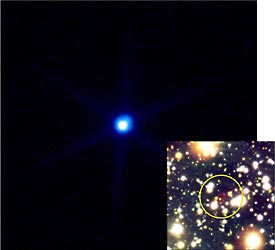Can stellar black holes be a category, or subset, of quark stars?
Strange stars are so called not because they're weird (though they are) but because the extraordinary pressures within them should turn some of their constituent quarks into a heavy type of quark named "strange." Neutrons and protons are made of two lighter types called "up" and "down." (The names were chosen whimsically and have no particular meaning.)
"It's possible that all the stars we have been calling neutron stars are in fact strange stars" or hybrids of the two, said Turner. If strange matter does convert everything it touches into more strange matter, these stars would consist of the stuff right up to their perfectly hard-edged surfaces, with nothing but vacuum above. If it doesn't, the stars could be hybrids with strange-matter cores and neutron-star outer layers.
from https://skyandtelescope.org/astronomy-news/quark-matter-stars-said-found/
The visible quark stars such as the one depicted would be quark-neutron hybrids. This would conveniently answer the question "what is black hole substance made of".
If this is certain to not be the case, what (if any) known substance can black holes de made of?
Note, I said a subset - "...strange stars exhibit a low-luminosity but high-temperature bremsstrahlung spectrum, which, in combination with the emission properties of the accretion disc, may be the key signature to differentiate massive strange stars from the black hole." in https://academic.oup.com/mnras/article/400/3/1632/962273
https://physicsworld.com/a/calculations-point-to-massive-quark-stars/
